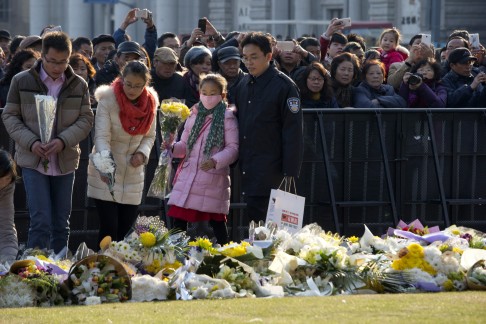
Censors suppress Shanghai stampede coverage as blame game begins
Local media sources say unprecedented tough controls imposed on news of the tragedy
Shanghai authorities have brought down a wall of strict censorship on local coverage of Wednesday night's deadly stampede, as questions mount over how such a tragedy could have occurred in the mainland's wealthiest and best-managed city.
Local sources said the censorship was "unprecedented and harsh" and officials were worried that they could be blamed for the stampede that killed at least 36 people.
A police source said many Huangpu district officials and police were likely to lose their jobs over the incident.
DON'T MISS: Photographer captures big picture from centre of Shanghai tragedy
Huangpu police admitted on Thursday that they underestimated the number of people showing up on the Bund, deploying fewer officers for the event than were needed.
"A lot of heads will roll" because the tragedy had infuriated state leaders, according to the senior police source.
The stampede happened at 11.35pm at Chen Yi Square in the Bund area, one of the city's most popular sightseeing spots, as thousands of revellers thronged to the riverfront to watch a light show.
At least 49 were injured, including 13 seriously, local health authorities said yesterday. Among the wounded were a Malaysian and another from Taiwan. State media said a Taiwanese person was among the dead.
Most of those killed and injured in the stampede were young people in their 20s, including college students, the official Xinhua news agency said.
As exhausted people fell or were knocked down, tripping more behind them, panic quickly spread through the huge crowds, with "young girls screaming desperately for their lives and the sounds of all sorts of curses around", wrote one eyewitness on social media.
Survivors described the scene as "hellish", Xinhua reported.
Some social media reports initially suggested that the stampede might have been caused by a large amount of banknote-shaped coupons raining down from a nearby building, but Shanghai police dismissed this as the cause of the stampede as only a few people came to pick them up.

Relatives and victims were under close police guard and local and overseas media were told that they needed Shanghai propaganda department permission to speak to the injured.
The Communist Party's propaganda department in Shanghai has issued several notices to local media in the past two days, instructing them on various issues, ranging from the scale of coverage and use of photos to interview protocols, according to three senior journalists.
"It seems ridiculous that local newspapers were instructed not to use photos showing people mourning for the dead victims," a senior newspaper editor said.
The stampede's cause has not been identified but media and government officials said they expected the authorities to gradually play down the incident by describing it as a simple accident.
Timeline: How the Shanghai stampede unfolded
Pundits are also watching to see if the city's party secretary Han Zheng and mayor Yang Xiong suffer in the political fallout.
"It is a do-or-die moment for many of the city's officials now," a source said. "Shanghai police and the propaganda department are doing their utmost to avoid negative reports."
Shanghai's historic Bund riverfront runs along an area of narrow streets amid restored old buildings, shops and tourist attractions. The China Daily newspaper in February reported that the city's population was more than 24 million at the end of 2013.
Last year, 14 people - some of them children - were killed and 10 injured in a stampede that broke out as food was distributed at a mosque in China’s Ningxia region.
Also last year, six students were killed in a stampede at a primary school in Kunming in the southwest, after the accidental blocking of a stairway corridor.

